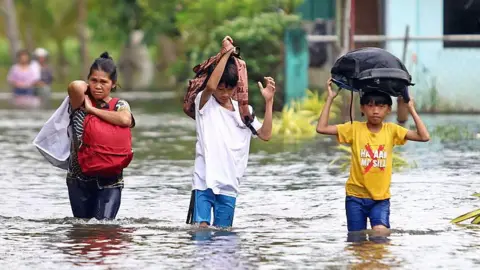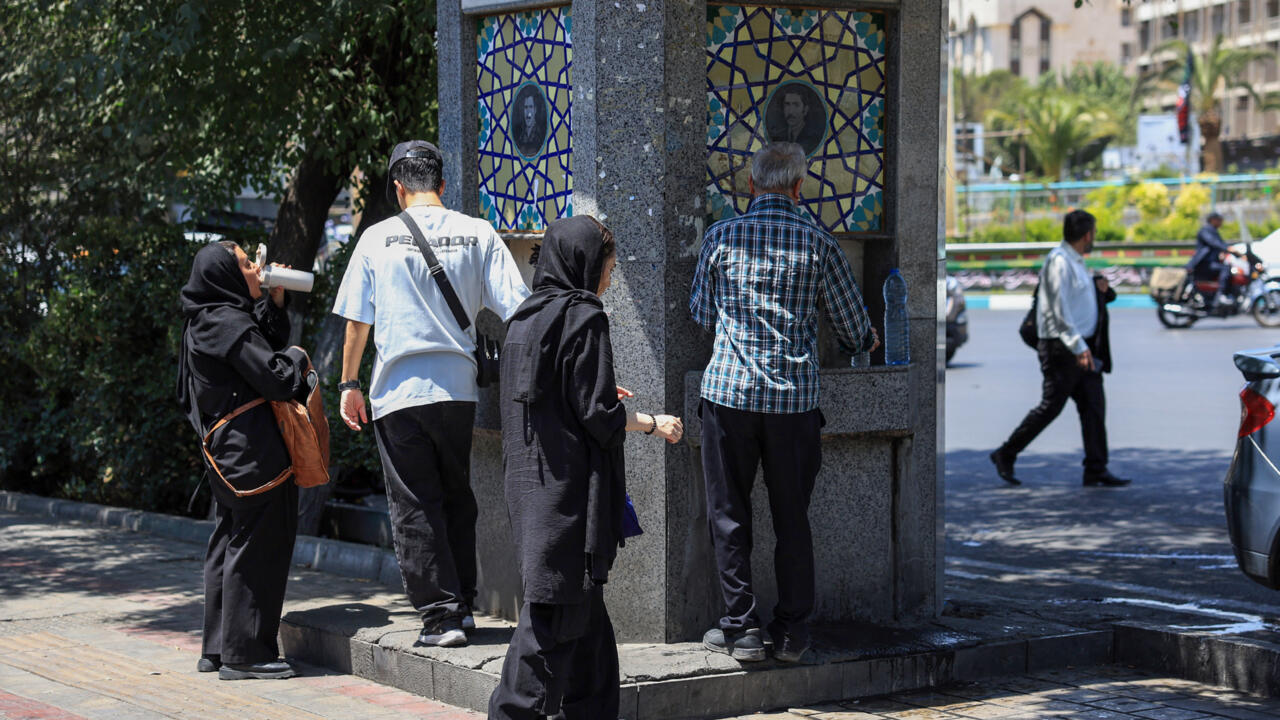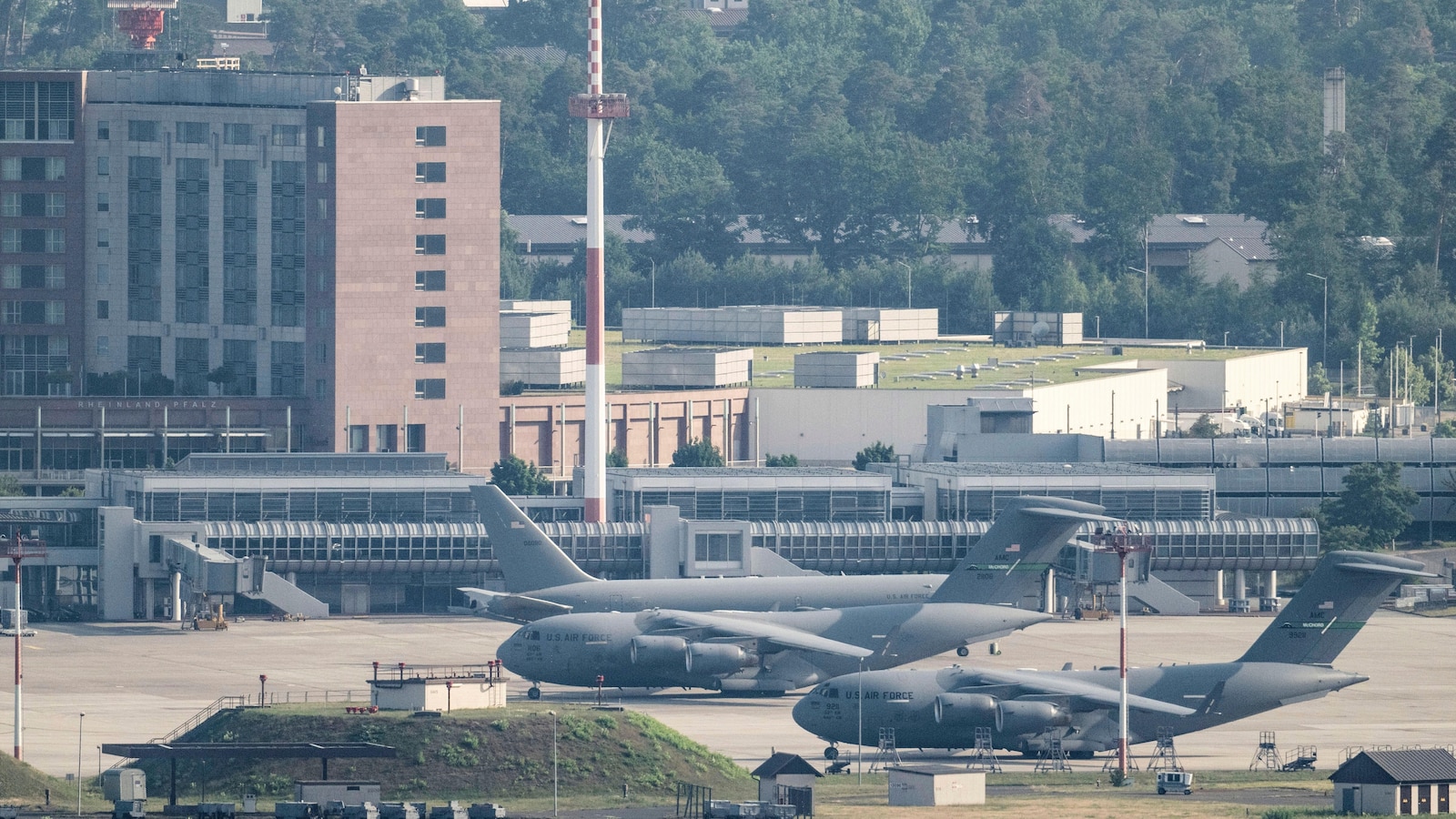
 AFP via Getty Images
AFP via Getty Images
Dozens of families in Remedios T Romualde, on the island of Mindanao, are among those who have been evacuated ahead of the typhoon's arrival
The Philippines is bracing for the arrival of another potentially devastating typhoon, less than a week after a different storm killed at least 200 people and left a trail of destruction.
Fung-wong, known locally as Uwan, is forecast to intensify to a super typhoon - with sustained winds of at least 185km/h (115mph) - before making landfall on the island of Luzon on Sunday evening local time at the earliest.
The Philippine meteorological service (Pagasa) says the storm will also bring heavy rain and the risk of life-threatening storm surges.
Several schools have either cancelled classes on Monday or moved them online, while Philippine Airlines has cancelled a number of local flights.
Typhoon Fung-wong is expected to weaken rapidly once it makes landfall but will likely remain a typhoon as it travels over Luzon.
Eastern parts of the Philippines have already begun experiencing heavy rains and winds, a Pagasa official said in a briefing on Saturday evening local time.
While much of the country is expected to be impacted, there are particular concerns about those areas that could take a direct hit - including the small island of Catanduanes, which lies off the coast of southern Luzon.
Residents there, as well as in other low-lying and coastal areas, have been urged to move to higher ground ahead of the storm's arrival.
A civil defence spokesman said evacuations had to be carried out by Sunday morning at the latest and should not be attempted during heavy rain and strong winds.
Typhoon Fung-wong has also forced the suspension of rescue operations following the passage of Kalmaegi, one of the strongest typhoons this year.
Heavy rainfall sent torrents of mud down hillsides and into residential areas. Some poorer neighbourhoods were obliterated by the fast-moving flash floods.
At least 204 people are now known to have died in the Philippines as a result of the earlier storm, while more than 100 are still missing.
Five people also died in Vietnam, where strong winds uprooted trees, tore off roofs, and smashed large windows.
Watch: Cars pile up on Philippines streets after major flooding from Typhoon Kalmaegi
The Philippines government declared a state of calamity across the country after Typhoon Kalmaegi and in preparation for the coming storm.
It has given government agencies more power to access emergency funds and fast-track the procurement and delivery of essential goods and services to those in need.
For some Filipinos, the devastation wrought by Typhoon Kalmaegi earlier this week has left them even more anxious about the storm to come.
"We decided to evacuate because the recent typhoon brought floods in our area, and now I just want to keep my family safe," Norlito Dugan told the AFP news agency.
He is among those who have taken shelter in a church in the city of Sorsogon in Luzon.
Another resident, Maxine Dugan said: "I'm here because the waves near my house are now huge, I live near the shore. The winds there are now very strong, and the waves are huge."
The Philippines is one of the most vulnerable countries in the world to tropical cyclones, due to its location on the Pacific Ocean where such weather systems form.
About 20 tropical cyclones form in that region every year, half of which impact the country directly.
Climate change is not thought to increase the number of hurricanes, typhoons and cyclones worldwide.
However, warmer oceans coupled with a warmer atmosphere - fuelled by climate change - have the potential to make those that do form even more intense. That can potentially lead to higher wind speeds, heavier rainfall, and a greater risk of coastal flooding.

 3 hours ago
2
3 hours ago
2










 English (US) ·
English (US) ·